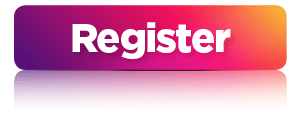 Hannah Kirk, “The Pink-haired Content Strategist,” is a content strategy expert helping businesses deliver exceptional digital content experiences. She has built a career transforming content infrastructure for startups. With deep expertise in technical writing and content management, Hannah specializes in implementing advanced tools like DITA, Docbook, and Markdown, optimizing content across multiple platforms and use cases.
Hannah Kirk, “The Pink-haired Content Strategist,” is a content strategy expert helping businesses deliver exceptional digital content experiences. She has built a career transforming content infrastructure for startups. With deep expertise in technical writing and content management, Hannah specializes in implementing advanced tools like DITA, Docbook, and Markdown, optimizing content across multiple platforms and use cases.
Hannah has driven product development, launched a UX Content Design practice, and advocates for diversity and accessibility in tech. She actively mentors technical writers and content strategists, helping them develop robust documentation and design practices. Hannah continues to share her industry insights through her Medium publication, Content Strategy Adventures, establishing herself as a thought leader in content strategy and design.
Docs-as-Code, DITA, or Unstructured Authoring?
I will demystify the complex world of docs-as-code, DITA, XML, and unstructured authoring platforms. Whether you’re a seasoned content professional or just dipping your toes into technical documentation, this presentation is tailored to help you make informed decisions about the best tools and practices for your rapidly-evolving business needs.
I will explain the key differences between these publishing approaches, discuss their pros and cons, and provide practical advice on choosing the right one for different scenarios. By the end of this session, you’ll have a clear understanding of each approach and be able to determine which one best aligns with your project requirements.
In this session, attendees will learn:
- The differences between authoring and publishing platform types: Unstructured, docs-as-code, DITA, and other XML/structured options.
- The pros and cons of the different authoring and publishing platform types
- What kind of authoring and publishing platforms are best for what kind of situations
- How to apply this knowledge to your project requirements and understand which kind of platform to use
 Hannah Kirk, “The Pink-haired Content Strategist,” is a content strategy expert helping businesses deliver exceptional digital content experiences. She has built a career transforming content infrastructure for startups. With deep expertise in technical writing and content management, Hannah specializes in implementing advanced tools like DITA, Docbook, and Markdown, optimizing content across multiple platforms and use cases.
Hannah Kirk, “The Pink-haired Content Strategist,” is a content strategy expert helping businesses deliver exceptional digital content experiences. She has built a career transforming content infrastructure for startups. With deep expertise in technical writing and content management, Hannah specializes in implementing advanced tools like DITA, Docbook, and Markdown, optimizing content across multiple platforms and use cases.

